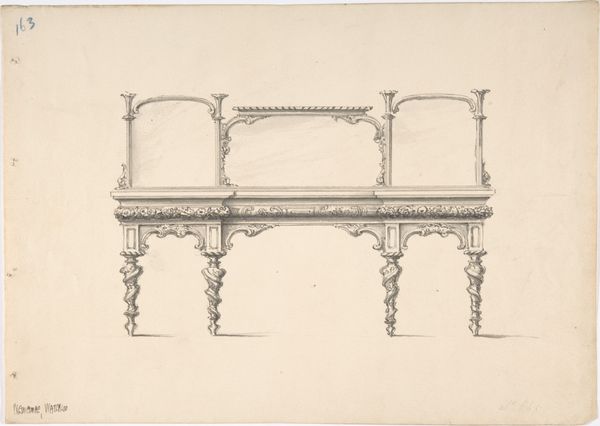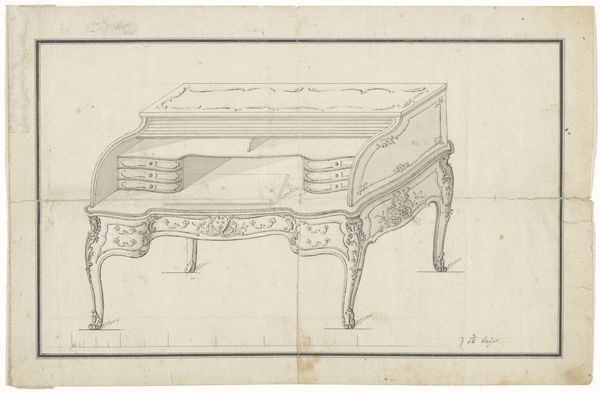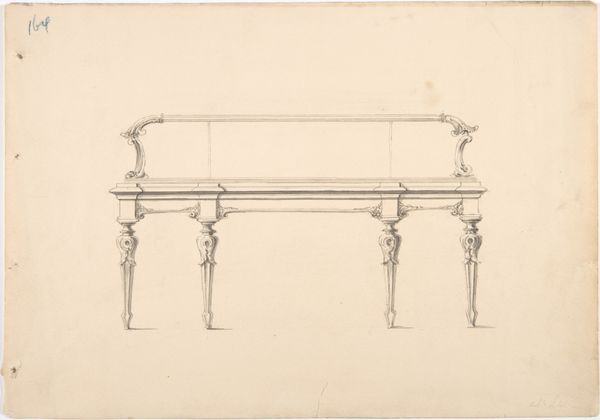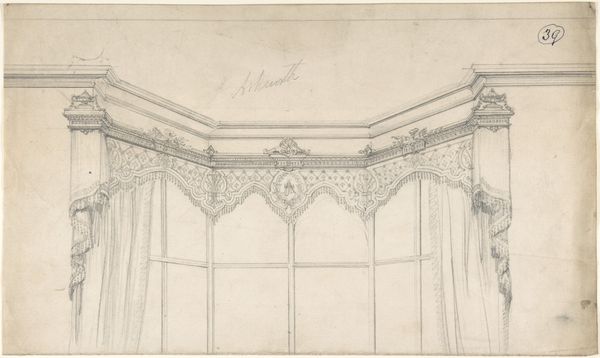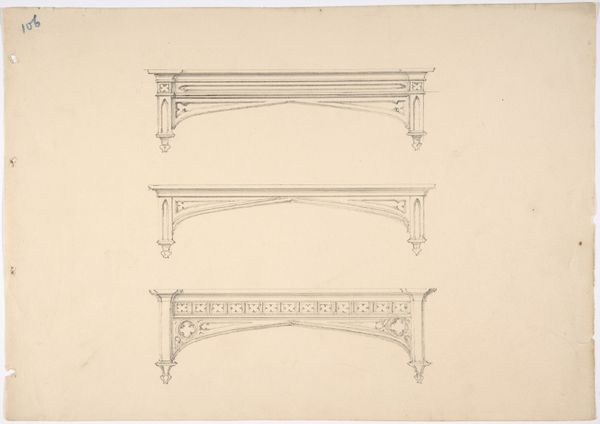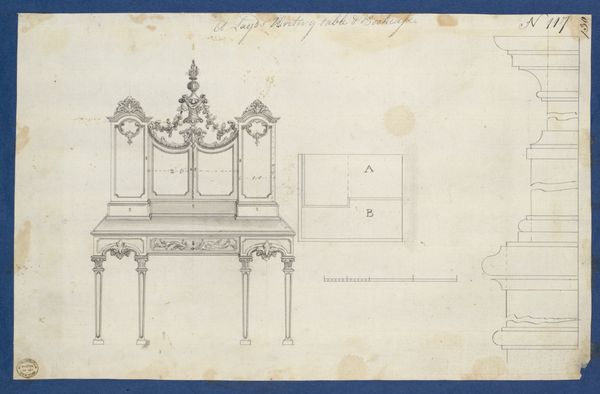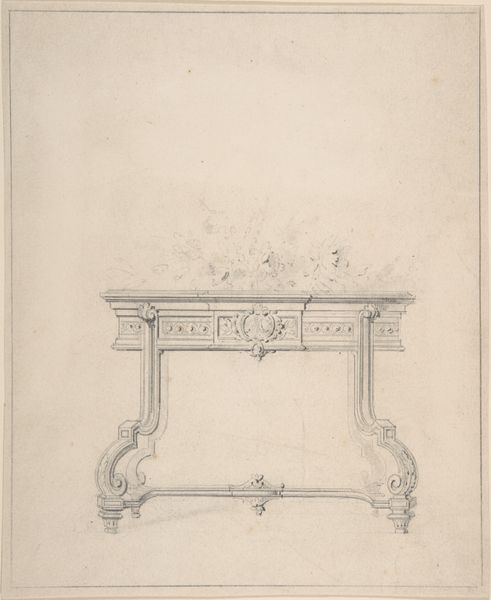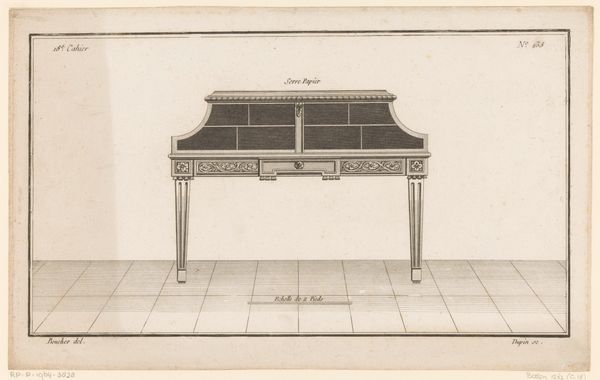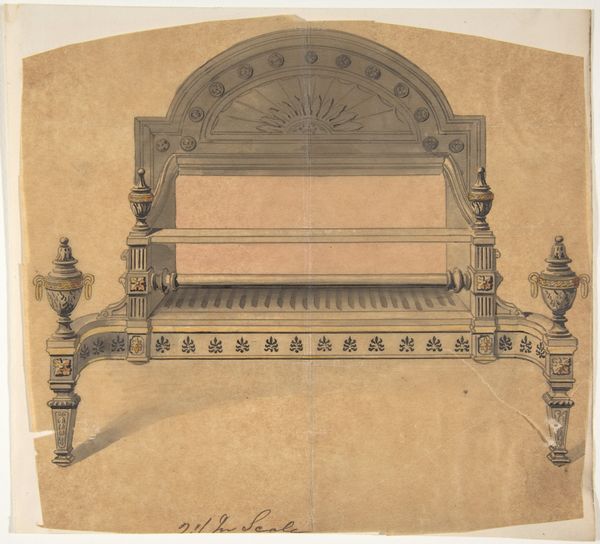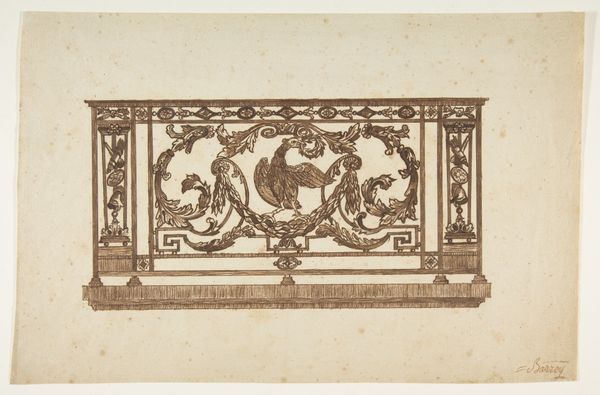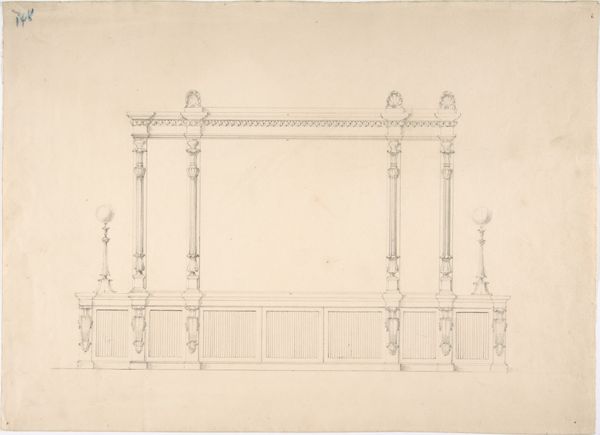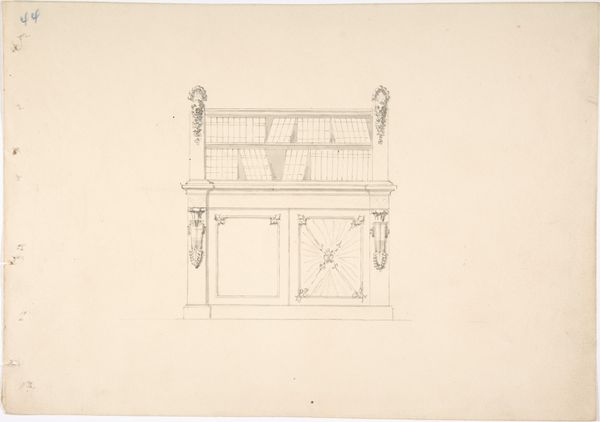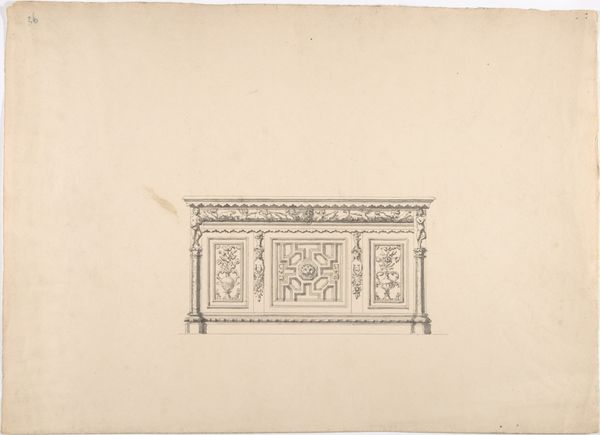
Dimensions: sheet: 9 x 12 1/2 in. (22.8 x 31.7 cm)
Copyright: Public Domain
Editor: Here we have "Design for Side Table" by Charles Hindley and Sons, sometime between 1841 and 1884. It's a drawing, a print in pencil. The detail is incredible, so intricate. What stands out to you about this design? Curator: The Gothic Revival style speaks volumes. Consider the pointed arches and elaborate ornamentation. How do these elements evoke a sense of history, even nostalgia, wouldn't you say? What emotions arise for you looking at it? Editor: Definitely a sense of grandeur, something old-world and dignified, perhaps even religious with the arches reminiscent of church architecture. And what about the little crest in the middle? Curator: Precisely. These crests often represented family lineage, status, belonging. But let's go beyond the aesthetic; the Arts and Crafts movement was deeply rooted in social commentary. Does this level of intricate work hint at anything else for you? Editor: Maybe a reaction against industrialization, a yearning for handcraftsmanship and pre-industrial values? Is the emphasis on nature symbolic? Curator: Exactly! Nature as a source of beauty and morality. Those interwoven leaves and floral patterns aren't just decorative, they carry associations with Edenic harmony, organic growth, maybe even a critique of urban squalor and industrial alienation. Does knowing this influence how you see it? Editor: Absolutely, the drawing becomes richer, layered with social and cultural meaning. The side table isn’t just a functional object anymore; it’s a symbol of a whole value system. Curator: Yes. And in that light, consider what it meant to include that imagery in the home – cultural memory embedded in furniture. Food for thought! Editor: Definitely. This drawing gives new meaning to the idea of “furniture as art.” I see so much more than just a side table now.
Comments
No comments
Be the first to comment and join the conversation on the ultimate creative platform.
